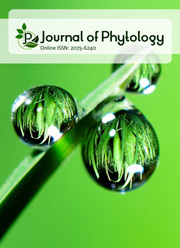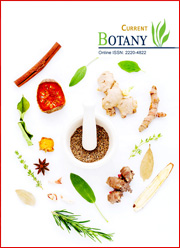Anti-advanced glycation end-products and antibacterial inhibitory activities of Neonauclea formicaria (Rubiaceae)
DOI:
https://doi.org/10.25081/jp.2025.v17.8991Keywords:
AGE, Antioxidants, Antibacterial, ESKAPE, Philippine medicinal plant, PhytochemistryAbstract
Neonauclea species have been studied for their phytochemical and potential pharmacological uses. However, many of its species still remained unexplored. The Philippine endemic Neonauclea formicaria has been documented for its ethnobotanical use, but little has been reported on its phytochemical and pharmacological profile. Hence, this study evaluates the total phenolic (TPC) and flavonoid (TFC) contents and assesses its ethanolic leaf extracts’ antiglycation, antioxidant, and antibacterial activities. N. formicaria leaf extracts at 1000 ppm gave 63.02±5.82 mg GAE/g DW TPC and 31.25±4.24 mg QE/g DW TFC. The extract showed a concentration-dependent activity in inhibiting AGE formation for the antiglycation assay, with an IC50 value of 2823.5 ppm. In antioxidant assay, the extract exhibited the highest TEAC value of 419.5±14.3 mg TE/kg DW at 250 ppm. Staphylococcus aureus (MRSA) and Pseudomonas aeruginosa were shown to be the most susceptible to the leaf extract (1000 ppm), with zones of inhibition at 16.56±5.65 mm and 14.06±2.65 mm, respectively. The results highlight that N. formicaria bears promising properties with pharmacological and nutraceutical applications.
Downloads
References
Aryal, S., Baniya, M. K., Danekhu, K., Kunwar, P., Gurung, R., & Koirala, N. (2019). Total phenolic content, flavonoid content and antioxidant potential of wild vegetables from western Nepal. Plants, 8(4), 96. https://doi.org/10.3390/plants8040096
Aureada, M. Y. M., Duran, J. D. R., Falcatan, S. R. A., Pornillos, K. M. T., Villanueva, M. A. G., Ordas, J. A. D., & Tan, M. A. (2023). Correlation of total phenolic and flavonoid contents on the antioxidant activity of Psychotria gitingensis and Psychotria pilosella. Journal of Phytology, 15, 110-115. https://doi.org/10.25081/jp.2023.v15.8545
Baig, M. H., Jan, A. T., Rabbani, G., Ahmad, K., Ashraf, J. M., Kim, T., Min, H. S., Lee, Y. H., Cho, W.-K., Ma, J. Y., Lee, E. J., & Choi, I. (2017). Methylglyoxal and advanced glycation end products: insight of the regulatory machinery affecting the myogenic program and of its modulation by natural compounds. Scientific Reports, 7, 5916. https://doi.org/10.1038/s41598-017-06067-5
Balouiri, M., Sadiki, M., & Ibnsouda, S. K. (2016). Methods for in vitro evaluating antimicrobial activity: A review. Journal of Pharmaceutical Analysis, 6(2), 71-79. https://doi.org/10.1016/j.jpha.2015.11.005
Breijyeh, Z., Jubeh, B., & Karaman, R. (2020). Resistance of Gram-negative bacteria to current antibacterial agents and approaches to resolve it. Molecules, 25(6), 1340. https://doi.org/10.3390/molecules25061340
Castro, G. C., Alejandro, G. J. D., Ramos, M. C. R., & Ysrael, M. C. (2018). Phytochemical analysis, antioxidant, and antimutagenic potentials of Greeniopsis sibuyanensis Elmer. Acta Manilana, 66, 25-32.
Castro, S. G., Cid, J. E. V., Ibañez, W. A. S., Alejandro, G. J. D., & Tan, M. A. (2016). GC-MS metabolite profiling of the hexane extract and antimicrobial characterization of the Philippine endemic Rubiaceae species Uncaria cordata var. circa, Psychotria luzoniensis, and Psydrax puberula. Acta Manilana, 64, 9-16.
Chang, F.-P., Huang, S.-S., Lee, T.-H., Chang, C.-I., Kuo, T.-F., Huang, G.-J., & Kuo, Y.-H. (2019). Four new iridoid metabolites have been isolated from the stems of Neonauclea reticulata (Havil.) Merr. with anti-inflammatory activities on LPS-induced RAW264.7 cells. Molecules, 24(23), 4271. https://doi.org/10.3390/molecules24234271
de la Rosa, L. A., Moreno-Escamilla, J. O., Rodrigo-García, J., & Alvarez-Parrilla, E. (2019). Phenolic compounds. In E. M. Yahia (Eds.), Postharvest Physiology and Biochemistry of Fruits and Vegetables (pp. 253-271) Sawston, UK: Woodhead Publishing. https://doi.org/10.1016/b978-0-12-813278-4.00012-9
de Paulo Farias, D., de Araújo, F. F., Neri-Numa, I. A., & Pastore, G. M. (2021). Antidiabetic potential of dietary polyphenols: A mechanistic review. Food Research International, 145, 110383. https://doi.org/10.1016/j.foodres.2021.110383
Demetillo, M. T., Betco, G. L., & Goloran, A. B. (2019). Assessment of native medicinal plants in selected mining area of claver Surigao Del Norte, Philippines. Journal of Medicinal Plants Studies, 7(2), 171-174.
Esguerra, J. D. J., Bernardo, J. M. M., Gimao, K. M. S., Peralta, M. E. T., Tiu, C. J. A., Hernandez, G. G. A., Alejandro, G. J. D., & Tan, M. A. (2024). Mechanism-based antioxidant activity of Rubiaceae species collected from Ilocos Norte, Philippines. Notulae Scientia Biologicae, 16(2), 11888. https://doi.org/10.55779/nsb16211888
Fernandes, A. C. F., Melo, J. B., Gênova, V. M., Santana, Á. L., & Macedo, G. (2022). Phytochemicals as potential inhibitors of advanced glycation end products: Health aspects and patent survey. Recent Advances in Food, Nutrition and Agriculture, 13(1), 3-16.
https://doi.org/10.2174/2212798412666210528130001
Harris, C. S., Cuerrier, A., Lamont, E., Haddad, P. S., Arnason, J. T., Bennett, S. A. L., & Johns, T. (2014). Investigating wild berries as a dietary approach to reducing the formation of advanced glycation endproducts: Chemical correlates of in vitro antiglycation activity. Plant Foods for Human Nutrition, 69, 71-77. https://doi.org/10.1007/s11130-014-0403-3
Karaket, N., Supaibulwatana, K., Ounsuk, S., Bultel-Poncé, V., Pham, V. C., & Bodo, B. (2012). Chemical and bioactivity evaluation of the bark of Neonauclea purpurea. Natural Product Communications, 7(2), 169-170. https://doi.org/10.1177/1934578X1200700208
Khan, M., Liu, H., Wang, J., & Sun, B. (2020). Inhibitory effect of phenolic compounds and plant extracts on the formation of advance glycation end products: A comprehensive review. Food Research International, 130, 108933. https://doi.org/10.1016/j.foodres.2019.108933
Mira, L., Silva, M., Rocha, R., & Manso, C. F. (1999). Measurement of relative antioxidant activity of compounds: a methodological note. Redox Report: Communications in Free Radical Research, 4(1-2), 69-74. https://doi.org/10.1179/135100099101534666
Moreira, D. C. (2019). ABTS decolorization assay - in vitro antioxidant capacity. https://doi.org/10.17504/protocols.io.42xgyfn
Muñiz, A., Garcia, A. H., Pérez, R. M., García, E. V., & González, D. E. (2018). In vitro inhibitory activity of Acca sellowiana fruit extract on end products of advanced glycation. Diabetes Therapy, 9, 67-74. https://doi.org/10.1007/s13300-017-0335-7
Ordas, J. A. D., Banag, C. I., & Alejandro, G. J. D. (2017) Neonauclea viridiflora (Rubiaceae), a new species of Naucleeae from Eastern Samar, with notes on myrmecophytic species in the Philippines. Systematic Botany, 42(2), 364-370. https://doi.org/10.1600/036364417X695592
Ordas, J. A. D., Razafimandimbison, S. G., Moran, C. B., & Alejandro, G. J. D. (2021). Phylogeny and the evolutionary origins of myrmecophytism in the Neonauclea clade (Rubiaceae) revisited, with particular emphasis on the Philippine lineages. Plant Systematics and Evolution, 307, 31. https://doi.org/10.1007/s00606-021-01752-5
Pizzino, G., Irrera, N., Cucinotta, M., Pallio, G., Mannino, F., Arcoraci, V., Squadrito, F., Altavilla, D., & Bitto, A. (2017). Oxidative stress: harms and benefits for human health. Oxidative Medicine and Cellular Longevity, 2017, 8416763. https://doi.org/10.1155/2017/8416763
Prata, C., Angeloni, C., & Maraldi, T. (2024). Strategies to counteract oxidative stress and inflammation in chronic-degenerative diseases 2.0. International Journal of Molecular Sciences, 25(9), 5026. https://doi.org/10.3390/ijms25095026
Quinto, E., & Santos, M. A. (2005). Microbiology. In B. Q. Guevara (Eds.), A Guidebook to Plant Screening: Phytochemical and Biological (pp. 65-95). Manila, Philippines: UST Publishing House.
Rodríguez-Yoldi, M. J. (2021). Anti-Inflammatory and antioxidant properties of plant extracts. Antioxidants, 10(6), 921. https://doi.org/10.3390/antiox10060921
Seawan, N., Vichit, W., Thakam, A., Thitipramote, N., Chaiwut, P., Pintathong, P., & Thitilertdech, N. (2014). Antioxidant capacities, phenolic, anthocyanin and proanthocyanidin contents of pigmented rice extracts obtained by microwave-assisted method. Suranaree Journal of Science and Technology, 21(4), 301-306. https://doi.org/10.14456/sjst.2014.32
Vergara, J., Demetillo, M., Ombat, L., & Rosal, J. (2021). Neonauclea formicaria (Rubiaceae) leaf extract inhibits vascularization in the chorioallantoic membrane of duck embryos. International Letters of Natural Sciences, 83, 22-31. https://doi.org/10.56431/p-gvak39
Wong, K.-Y., Vikram, P., Chiruvella, K. K., & Mohammed, A. (2015). Phytochemical screening and antimicrobial potentials of Borreria sps (Rubiaceae). Journal of King Saud University -Science, 27(4), 302-311. https://doi.org/10.1016/j.jksus.2014.12.001
Published
How to Cite
Issue
Section
Copyright (c) 2025 Mirakel Zoe P. Layug, Jose Nathaniel F. Domagas, Enrico C. Supan, Cameron D. Cuevas, Ray Allen L. Benitez, Jorge Anton D. Ordas, Mario A. Tan

This work is licensed under a Creative Commons Attribution 4.0 International License.





 .
.